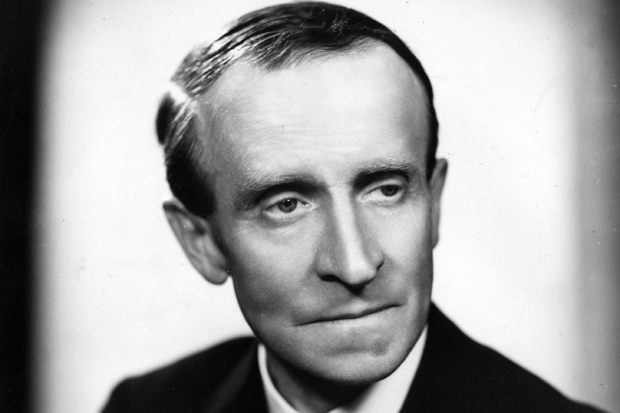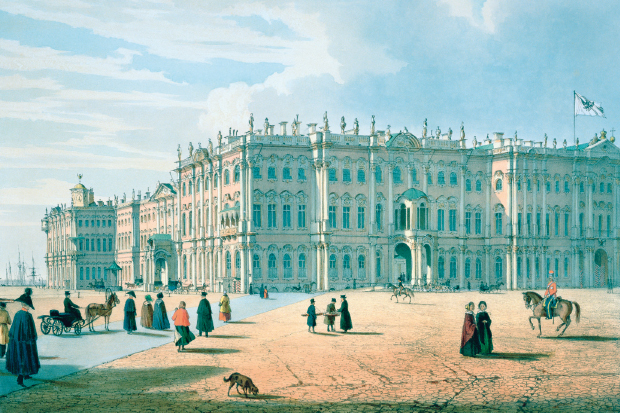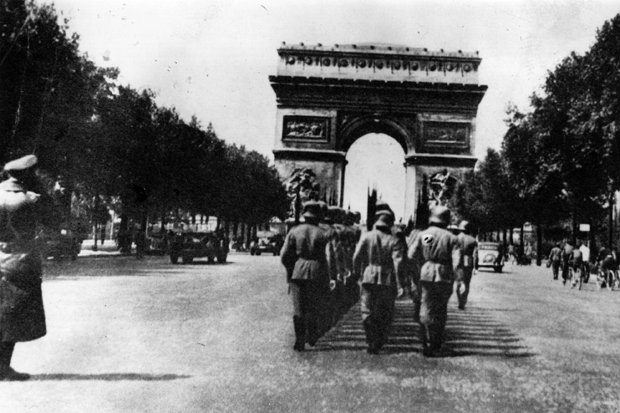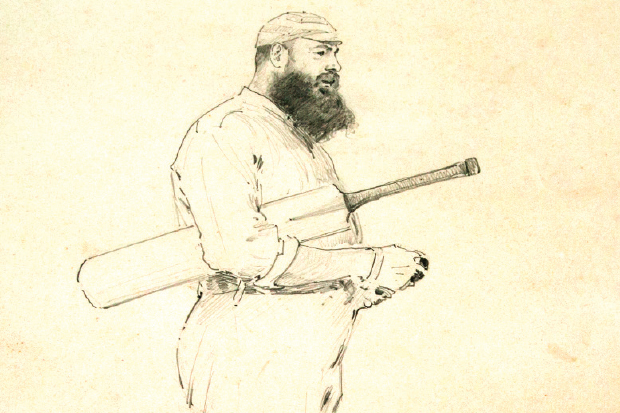Up the stairs with flying feet,
You would burst upon us, cheering
Wellington’s funereal street.
Fresh as paint, though you’d been ’railing
Up from Scotland all the night,
Or had just returned from scaling
Some appalling Dolomite…
Pundit, publicist and jurist:
Statistician and divine;
Mystic, mountaineer and purist
In the high financial line;
Prince of journalistic sprinters —
Swiftest that I ever knew —
Never did you keep the printers
Longer than an hour or two…
Still I hope with kindly feeling
You recall the days of yore,
When I watched you gaily reeling
Off your folios by the score;
Self-effacing, self-suppressing
When your elder took the reins,
Though at half his age possessing
Twice and more than twice his brains.
In 1907, Charles Graves, who worked for The Spectator, wrote the above valedictory poem to mark the departure of his part-time colleague, John Buchan. This piece of high-class doggerel hits a number of nails firmly on the head: in particular Buchan’s modesty, fizzing vitality and remarkable intellect, as well as the speed at which he worked and the variety of his occupations and preoccupations.
He had first written for The Spectator (owned and edited by St Loe Strachey and based then in Wellington Street) in 1900, and worked for Strachey, off and on, between 1901 and 1907, becoming assistant editor in 1906. In all he wrote 800 articles, mostly anonymously, so that the full variety of his output has only recently been uncovered. His subjects ranged from foreign policy to Bergson’s philosophy to the glamour of mountaineering to new poetry.
Graves’s valediction was prompted by Buchan’s decision to leave The Spectator, as well as the Bar, in order to work for Thomas Nelson and Son, an Edinburgh publishing company with a London office. He was engaged to marry Susan Grosvenor who, though very sweet and intelligent, had no money of her own, yet by reason of her privileged upbringing was quite unable to boil an egg or sew on a button. He needed a larger and surer income to afford a London establishment big enough to accommodate servants. Despite his change of career, he continued to write for The Spectator from time to time until the early 1930s.
As well as journalist and barrister, he was at various times colonial administrator, head of wartime propaganda, member of Parliament, novelist, poet, historian, public thinker and viceroy. But his name has been made, seemingly for all eternity, by a short spy thriller which he wrote in a few weeks for his own amusement.
In August 1914 Buchan took a family holiday in Broadstairs, Kent; a duo-denal ulcer was playing up badly and his doctor recommended rest. There he began his second ‘shocker’ (the first was The Power House), finishing it when ordered to bed again in December. The book’s dedication, to his friend and business partner, Tommy Nelson, defines the ‘shocker’ as a ‘romance where the incidents defy the probabilities, and march just inside the borders of the possible’, which, taking in all the coincidences as well as the explosive incident with the lentonite, seems about right. The novel was serialised in Blackwood’s Magazine between July and September 1915, and appeared in book form in October, when it was an immediate critical and commercial success, selling 25,000 copies in the first six weeks.
The plot was, of course, informed by the febrile international situation in the summer of 1914; the title came from the number of wooden steps that led down to a Broadstairs beach, counted for Buchan by his six-year-old daughter, Alice.
The tense, fast-moving, first-person narrative contains surprisingly interesting characterisations for an adventure story, not to mention deft and vivid descriptions of landscape and weather, for which Buchan was to become renowned. It has all his hallmarks of brevity, clarity, keen observation and wry humour. The South African Hannay irritates some readers by his heartiness, robust colonial utterances and emphasis on getting a job done, but we shouldn’t forget he was conceived in wartime. I like his resourcefulness, sensitivity to atmosphere and cheerful courage. Although at least partly modelled on General Sir Edmund Ironside, Hannay is, in many ways, the average man who knows his limitations, and is thus someone with whom readers can readily identify. The book was very popular with soldiers in the trenches.
In 1934, Alfred Hitchcock bought the option to film the book from Buchan, by now a very well-known writer and politician. The 39 Steps, possibly the first ‘man-on-the-run’ thriller ever filmed, made Hitchcock famous in America for the first time when it came out in 1935. Much of the plot was changed to accommodate a love interest and to reflect the different international situation, 20 years on from 1915. Hannay, played by Robert Donat, acquires a beautiful but reluctant companion, Pamela (Madeleine Carroll). The scene where they have to share a room in a Scottish inn and she removes her stocking, while handcuffed to him, gives off an erotic spark even now. An amused Buchan told Hitchcock at the premiere that the film was a great improvement on the book; only my loyal granny could never be reconciled to Hitchcock changing the story.
The novel inspired two later films and a television adaptation, but it’s the Hitchcock film that has become an international cultural icon; so much so that a jolly, send-up stage version of it has played to audiences all over the world for the past ten years. We shall never know whether the book would have remained in print continuously for a century without the film industry promoting it so assiduously. What is plain is that its prominence has succeeded in obscuring many of the other things for which John Buchan deserves to be remembered.
Got something to add? Join the discussion and comment below.
Get 10 issues for just $10
Subscribe to The Spectator Australia today for the next 10 magazine issues, plus full online access, for just $10.
Ursula Buchan could only manage 300 articles in her 26 years as The Spectator’s gardening columnist. She is presently engaged in writing a biography of John Buchan for Bloomsbury.
You might disagree with half of it, but you’ll enjoy reading all of it. Try your first month for free, then just $2 a week for the remainder of your first year.














Comments
Don't miss out
Join the conversation with other Spectator Australia readers. Subscribe to leave a comment.
SUBSCRIBEAlready a subscriber? Log in